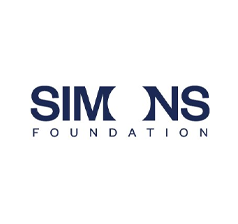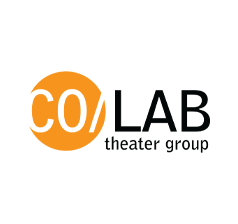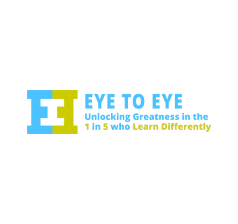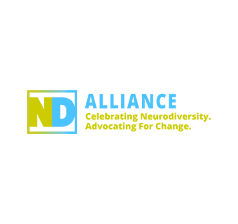HOW TO ENGAGE
How to Dance in Ohio is based on Alexandra Shiva’s Peabody Award-winning documentary film about the real experiences of autistic young adults.
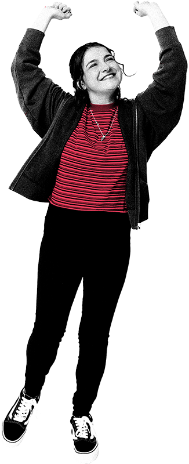
PERSPECTIVE STATEMENT
The How to Dance in Ohio team recognizes that this musical only represents seven autistic characters, and their families and experiences, at a particular moment in their lives. The characters and situations in the show are based on real-life people from the Amigo Family Counseling Center portrayed in the documentary How to Dance in Ohio. As shared in our musical, “If you’ve met one autistic person, you’ve met one autistic person!”
We acknowledge that How to Dance in Ohio does not represent the entirety of the multifaceted word “autism” and what it means to be neurodivergent or disabled. It’s often said that “autism is one word to describe millions of different stories” (source: Stuart Duncan). We bring this musical and these seven characters to our audience not as a representation of all neurodiversity, but from the perspective that this show aims to start a broader conversation regarding autism, disability, and inclusion in the commercial theater industry.
We strive to reflect our understanding of such topics as preferred by our cast, crew, and creative team, including autistic self-advocates and allies. On that same note, because of the evolving nature of disability and autism-related topics, it is possible that a perspective was not represented or that language has changed. Your opinions and feedback are important to us; please email feedback@howtodanceinohiomusical.com if you believe there is something we should consider or that we possibly missed. We’d be grateful to hear from you!
FREQUENTLY ASKED QUESTIONS
According to the article “About Autism,” published by the Autistic Self-Advocacy Network, “Autism is a developmental disability that affects how we experience the world around us.” It goes on to say, “Every autistic person experiences autism differently, but there are some things that many of us have in common,” such as:
- We think differently,
- we process our senses, and the world around us, differently,
- we move differently,
- we communicate differently,
- we might need help with aspects of daily living (that non-autistic people might not need help with).
Autism is often considered a “non-visible disability,” meaning it may not be apparent from looking or talking to a person that they are disabled. (An apparent disability might be muscular dystrophy, in which the individual is a wheelchair user.)
Ableism is the societal, interpersonal, and institutional discrimination against people with mental, physical, visible, or non-visible disabilities. It intersects with and is discussed alongside other negative -isms such as racism, ageism, and sexism. RespectAbility, a disability advocacy nonprofit, defines it as “the belief that people who have disabilities are somehow less human, less valuable, and less capable than others.”
Another working definition can be found on Talila A. Lewis’s blog, which states that ableism is “a system of assigning value to people’s bodies and minds based on societally constructed ideas of normalcy, productivity, desirability, intelligence, excellence, and fitness.” The definition goes on to highlight the intersections of other fear-based and socially constructed forms of discrimination.
We use the term “autism” to acknowledge the authenticity of people’s experiences and because it is an intrinsic part of their identities. We avoid euphemisms that could imply a desire to not say “disability” and, thus, create a negative stigma (for example, “differently abled” or “special needs”). Furthermore, disabled and autistic communities do not exist in a silo, and their intersection with other identity markers—including race, gender, and sexual orientation—are essential to acknowledge and explore.
You might notice that we are not using the word “disorder.” It sits uncomfortably with many autistic individuals. (ASD does indicate “disorder”; that is what the “D” stands for.)
We have also received feedback that the word “spectrum” could be offensive to some, implying that autism is a range from low to high or a lot to a little—and autism isn’t like that! We recognize and continue to learn that there is more nuance to autism than one simple linear scale. However, our team uses this word and understands it to represent the vastness of autism and autistic people.
Note: Certain individuals may identify with this language, and that’s OK! It is always important to respect one’s personal preferences.
Generally, autistic people prefer identity first (“autistic person,” rather than “person with autism”). Because of this, that is the language choice the production has made as well. And when in doubt, always ask the individual person!
Absolutely not! There are many theatrical pieces around the world that have disabled artists on stage.
The Broadway cast featured both autistic and non-autistic actors, Broadway vets and rising stars. Because the cast included actors who identify as autistic, neurodivergent, and neurotypical, the combination of these identities is what made our cast neurodiverse. The autistic characters and understudies were casted authentically—meaning if they played an autistic character, they identify as autistic as well.
Yes, there are! We are fortunate to have many autistic collaborators both onstage and behind the scenes. Early on in the process, we hired an Autistic Creative Consultant to provide feedback on the script and character development. Our Associate Producer also identifies as autistic, as do our Casting Director, Assistant Music Director, SCDF Directing Fellow, Production Assistant, Script Assistant, Graphic Designer, and many other team members. We’ve also collaborated with CO/LAB Theater Group to learn about developmental disabilities through their Sharing the Stage workshop, which is led by neurodiverse facilitators.
You can share the information you’ve learned or know about autism or about the show. Avoid generalizations about autistic people, and learn about each individual’s experiences, support needs, interests, likes and dislikes—the same things you would learn about any other person you meet! Understand that a person’s self-advocacy holds more weight than any assumption you may have about autism or autistic people. Furthermore, empower yourself to respectfully correct misconceptions, poor language, and misinformation about autism. And be sure that when you do, you refer to an autistic and/or disabled scholar for further information.
More to Talk About is Level Forward’s Anthem Award–winning multimedia, multi-format, social-impact platform that triples as a live space, digital experience, and podcast. MTTA uses story as a catalyst — and convenes today’s most thought-provoking culture makers — to enrich audiences with creative conversations, activations, and resources ignited by iconic works on stage and screen. Let’s talk more about disability justice, coming of age, anti-ableist worlds, and beyond in How to Dance in Ohio.
Click here to learn more.
How to Talk About Disability and Autism:
- Identity-First Language: Autistic Self-Advocacy Network
- “How to talk about disability sensitively and avoid ableist tropes”: NPR
- Disability Language Style Guide: National Center on Disability and Journalism
- “Don’t be scared to talk about disability”: NPR
Organizations and Resources We Love:
- RespectAbility
- Autistic Women & Nonbinary Network (AWN)
- Autistic Self Advocacy Network
- Katherine May’s Autism Resource Page
- GIVE: Your Guide to Teaching Artistry in Inclusive Settings
- CO/LAB Theater Group’s “Sharing the Stage” Workshop
- Crip Camp
- The Daniel Jordan Fiddle Foundation
Additional Relevant Resources:
PARTNERS
If an organization is not listed on our production resources page, it indicates that we have not yet engaged in a collaboration with that organization.




